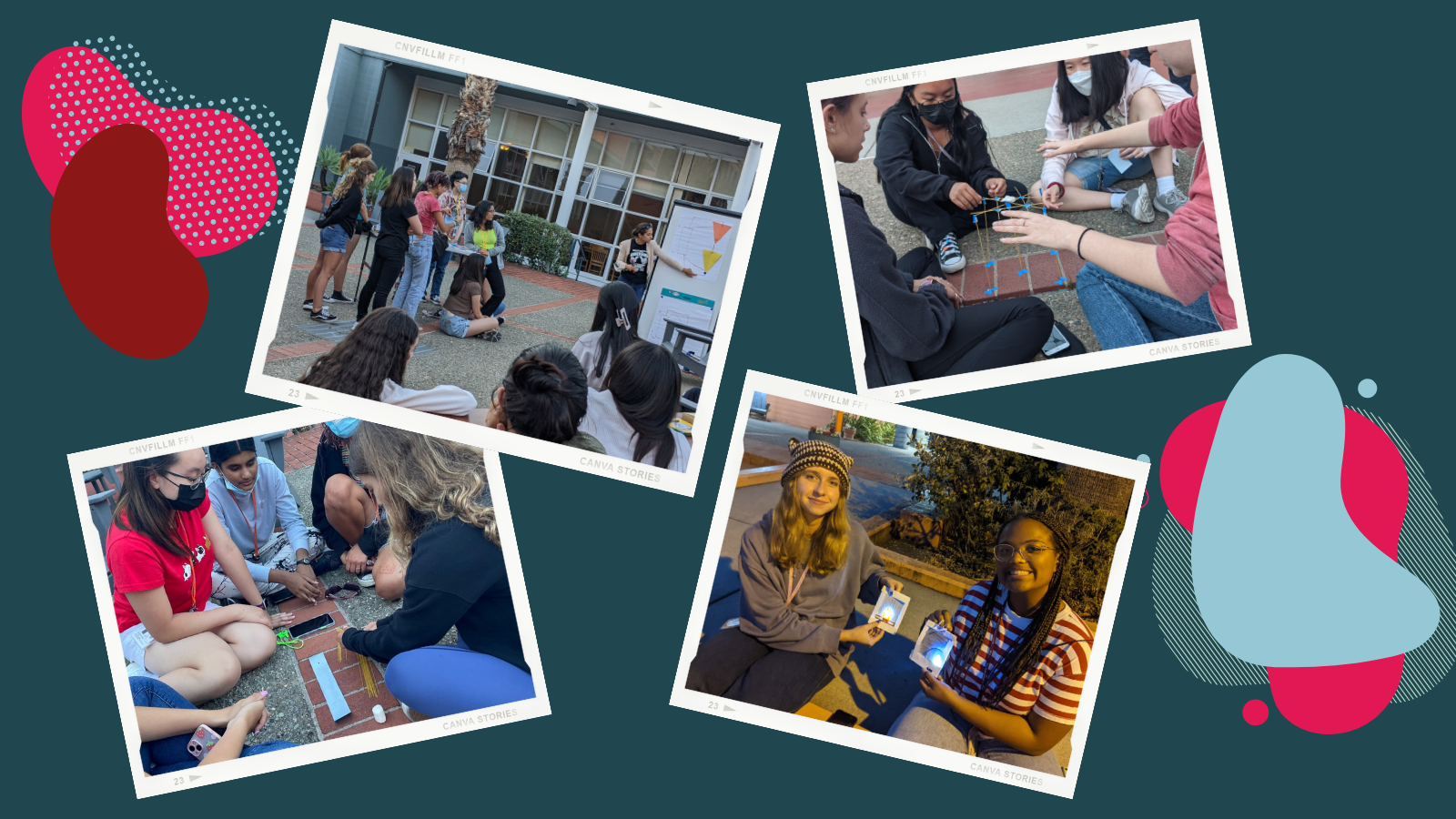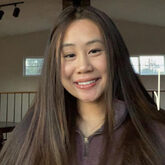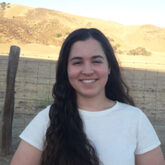Late in July 2022, on a bus full of STEM-curious high school students from across Northern and Central California, Kedaton “Joey” Campbell confessed the unimaginable: She didn’t like math.
“We were talking about our majors and what we enjoy, and I was like, ‘Man, I really can't stand math. I love engineering, but I can't stand math,’” she says.
Rather than greeting the revelation with disapproval, a fellow student invited Campbell to reconsider. “[She] asked me if I had really thought about it, how it's everywhere in our world,” she says. “It's kind of beautiful.”
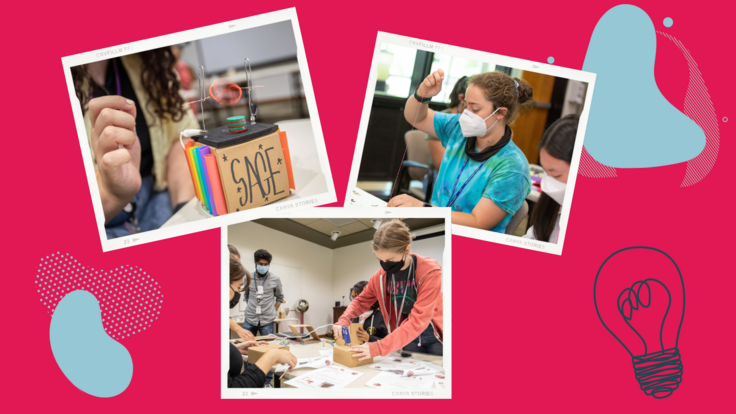
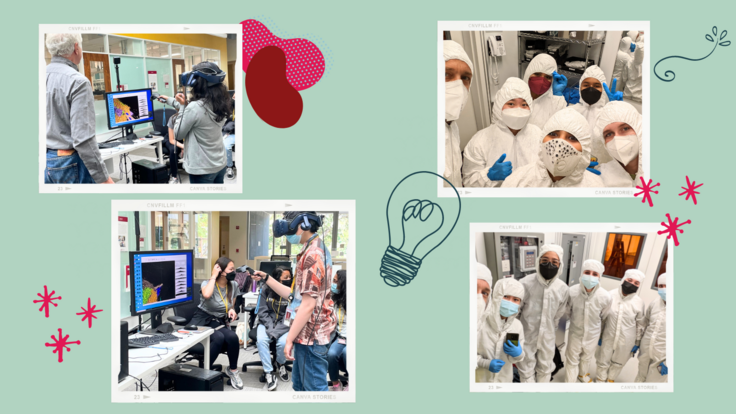
This transformative revelation came en route to the US Department of Energy’s SLAC National Accelerator Laboratory, where Campbell participated in the annual SAGE—Science Accelerating Girls Engagement—camp, a week’s worth of activities meant to foster a love for STEM and encourage engagement in it among women and gender minorities.
SAGE camp first began at SLAC in 2018, with funding from DOE and the Gordon and Betty Moore Foundation. The initial program had 20 participants; it has since expanded to five more national laboratories, serving more than 700 campers in total.
With a mission to broaden gender diversity in STEM and foster creativity and innovation for continued scientific and technological leadership, SAGE camp is now a part of the larger SAGE Journey program, which includes internships at SLAC as well as Los Alamos National Laboratory.
For Symmetry, Campbell, along with fellow SAGE alumni Anita Douangphrachanh and Charlotte Meredith, talked with current SAGE intern Annika Bereny about how the camp affected their lives.
Anita Douangphrachanh
Throughout high school in Pinole, California, Anita Douangphrachanh found herself developing an interest in engineering. Her school encouraged this enthusiasm with classes and afterschool activities, but they were often held in portable classrooms, as the school had limited space, and students were given limited access to supplies and computers.
“My high school didn’t have many resources provided for our engineering classrooms,” she says. “There weren’t a lot of materials to build with, so if we were to build a robot, we all would have to take turns to share.”
After Douangphrachanh’s sophomore year, her engineering teacher recommended she attend the SAGE camp at SLAC.
SAGE students usually conduct projects and experiments on site, but due to the COVID-19 pandemic, the camp had moved online. Program organizers improvised and mailed materials to each participant instead. Douangphrachanh received equipment such as breadboards, which are used to build prototypes of electronic circuits, in addition to circuits, mini solar panels, and a small laser.
“Since I was used to sharing with classmates, it was really nice to have my own set of materials,” Douangphrachanh says. “Afterwards, I found YouTube videos to use them in other ways and learned on my own.”
During her senior year, Douangphrachanh decided that she wanted to use the lessons she had learned and the resources that had been made available to her to build up the next generation in STEM. Coordinating with contacts from SAGE, she created an event at her high school where students could come and ask questions to scientists from both SLAC and Lawrence Berkeley National Laboratories, as well as learn about the SAGE program.
She says she wanted to provide more of the guidance and mentoring she found through SAGE.
“Going through SAGE, I had that opportunity,” she says, “and I wanted to share those other opportunities and resources to other students at my school.”
After graduating from high school, Douangphrachanh enrolled in Contra Costa Community College in San Pablo, California. Her plan was to take classes to prepare for a degree in mechanical engineering at a 4-year college. Part of that plan involved getting a STEM-related internship after her freshman year, but she says it was a struggle to find any that were not solely for students at 4-year institutions.
She decided to reach out to the SAGE program to see if they offered summer internships and if she would be eligible for one. “It’s hard reaching out to people because I’m very introverted,” she says, “but [Program Director Loy Oppus-Moe] makes me feel so comfortable and has formed a SAGE community.”
She was able to secure an internship working on a coding project at SLAC. “Without SAGE, I wouldn't have an internship opportunity. I would say having an internship last year changed my life and maybe even my future.”
Charlotte Meredith
Going to high school in Central California, Charlotte Meredith was more invested in art classes than science. “I didn't really do any extracurriculars that were STEM-related,” she says. “But I really enjoyed my math class, and I was always asking questions.”
Her curiosity is what prompted her math teacher to recommend her for the SAGE camp. It was 2021, the summer after her junior year.
She says she applied out of curiosity. “I was hoping to figure out if there was something in STEM that interested me and that was for me,” she says. “I wanted it to expose me not only to careers, but hobbies, passions and possible future majors.”
The week of camp, which was held remotely during the pandemic, Meredith says she opened Zoom every day excited to learn.
Meredith says the SAGE program made science accessible by showing her the inner workings of a national laboratory and introducing her to scientists. “I think I viewed STEM as this entity that I was on the outside of, but it's not that way at all. You can be a part of it in whatever way you want. You don’t need a PhD in physics in order to be helpful or contribute to science, for example.”
Meredith says she learned about more than just STEM careers. SAGE instructors also taught campers about the kind of mindset to use to cope with intimidating challenges like those faced in scientific research. They emphasized the idea of growth.
“Maybe you're not nervous, but you're excited,” Meredith says. “Physiologically it's a similar state of mind, but also cognitively you can tell yourself ‘I'm excited to confront this,’ or ‘I'm excited to get working.’ I've definitely told myself that, not only to calm myself, but also to adapt to that way of thinking.”
Meredith left camp with the confidence to sign up for AP Physics. “I thought ‘It's gonna be really hard, but maybe try it,’ right? Just because you're a beginner doesn't mean you're going to be bad at it.”
The physics class went well, and Meredith earned an A. After that, Meredith says she began to see herself contributing to a STEM field in the future. She applied and got into the University of California, Berkeley, where she is currently majoring in molecular and cell biology.
“I wasn't really sure if I was going to go into STEM because I felt that other people knew more than me initially,” she says. “But I think learning to be open, to try new things and to give yourself room to experience growth was kind of what led me into biology.”
Joey Cambpell
Growing up, Joey Campbell would tinker with objects around the house, making little inventions for fun. The two she best remembers are a device that would dispense candy, after her chore of doing the dishes was complete, and a gadget that was able to create automated spray-paint art on household items in less than two minutes.
Looking back at them, Campbell is sure that these creations solidified her desire to pursue engineering and art. A year prior to attending the SAGE camp, she had enrolled in Foothill College in Los Altos Hills, California, as a 14-year-old, and was pursuing an associate degree in engineering.
But until that moment in the bus on the way to SAGE camp, she had had an aversion to math. She resented the monotony of math lessons and couldn’t understand the real-world applicability of some of the concepts.
She says her confession was a turning point in her relationship with STEM, the moment in which her mental barrier—recoiling at the first sign of math—finally fell. “I did take the rest of the camp to process it,” she says. “I had my peers around to ask about their experiences, and I did my own research on artistic ways to think about math. It totally pivoted my perspective on STEM.”
Seeing researchers and physicists around SLAC using these advanced formulas as part of their jobs also reversed her ideas about the usefulness of advanced math. “In those moments I realized that learning the concepts in school is the hard part,” she says. “Using the formulas to easily and accurately calculate something in the real world is what we endure classes for.”
One year after attending SAGE, Campbell is exploring a newfound interest in cosmology while maintaining her love of the arts. “A big point I like to make is that they were never really a separate thing,” she says. “Leonardo da Vinci was simultaneously an artist and an engineer for his whole life, and he's one of my role models.”
Through SAGE camp, Campbell found even more role models, whom she says helped her better understand what it’s like to study STEM. “It really changes how you think about academia and the STEM field,” she says. “Getting a PhD seems like an impossible thing, but meeting all these grad school students on the way to that makes it so much more real and achievable.”
While the SAGE Journey program is a STEM-centric one in nature, Campbell says one of its greatest strengths is the way it empowers young students to truly believe in themselves and their future. “I realized I'm not limited at all in what I do,” she says. “I don't know how I could have gotten through the rest of my life without that.”



